20 Sweet Italian Wine Bottles You Must Try in 2025 (Prices, Pairings)
Sweet Italian wines come with irresistible fruity flavors and a seductive syrupy texture! They’re the perfect addition to any joyous occasion and pair exquisitely with almost every dessert.
Typically, sweet Italian wine comes in three main styles: sparkling, naturally sweet (Passito), and fortified.
To help you choose the right wine for your palate, we’ll explore each style, the best bottles, and food pairing and serving suggestions in detail.
Further reading
- Discover why Italian Red Wine is such a coveted collectible treasure.
- Explore the rich winemaking history of the Italian Wine Regions.
Italian Fortified Wines
Fortified wine is produced by adding a neutral grape spirit (called brandy) to the wine during fermentation. The addition of the neutral spirit stops the fermentation process and substantially increases the alcohol content while preserving the wine's residual sugar levels.
Here are the three types of sweet Italian fortified wine:
1. Sweet Vermouth
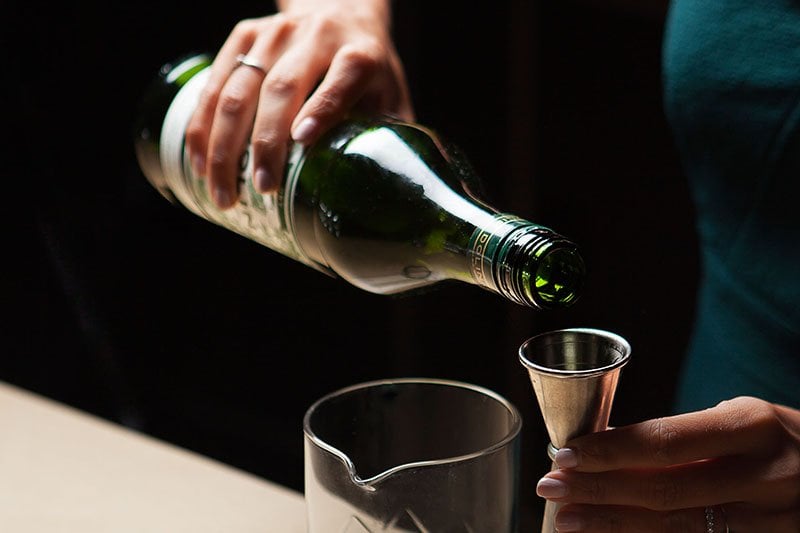
Sweet Vermouth is a fortified wine that’s produced in Turin, Italy. This dessert wine is sweetened and aromatized with roots, barks, flowers, seeds, herbs, and spices.
On the palate, sweet Vermouth wines offer dark fruit flavors and spice notes.
Sugar level: 100–150g residual sugar
Grape varieties: Neutral white grapes like Catarratto and Trebbiano
Best Sweet Vermouth bottles:
- Cinzano Vermouth Amaro ($136)
- Carpano 'Antica Formula 1786' Vermouth ($34)
2. Marsala
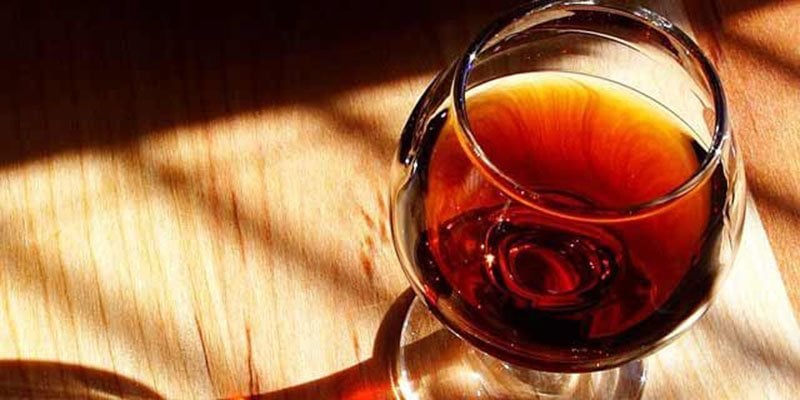
Marsala wine is a fortified wine produced in the far west of Sicily.
These Sicilian wines usually have cooked apricot and brown sugar flavors. They may also display hints of vanilla and savory flavors.
Sugar level: A minimum of 100g residual sugar
Grape varieties: Local white grape varieties including Grillo, Inzolia, Catarratto, and Damaschino
Best Marsala bottles:
- 2004 Marco De Bartoli Marsala Superiore Riserva ($100)
- 2000 Cantine Pellegrino Marsala Vergine Riserva ($33)
3. Barolo Chinato

Barolo Chinato is produced in a small area of Piedmont, Northwest Italy.
This dessert wine has bitter orange marmalade flavors and spice notes. Barolo Chinato is also a fantastic alternative to vintage Port wines.
Sugar level: At least 150g residual sugar
Grape varieties: Produced with 100% Nebbiolo grapes
Best Barolo Chinato bottles:
- Cappellano Barolo Chinato ($74)
- Bartolo Mascarello Barolo Chinato ($270)
Italian Passito Wines
Passito is a sweet Italian dessert wine made from dried grapes. This drying process concentrates the grape sugars, resulting in wines with higher alcohol content, sweeter flavor, and balanced tannins.
Here are three types of Italian passito wines:
1. Recioto
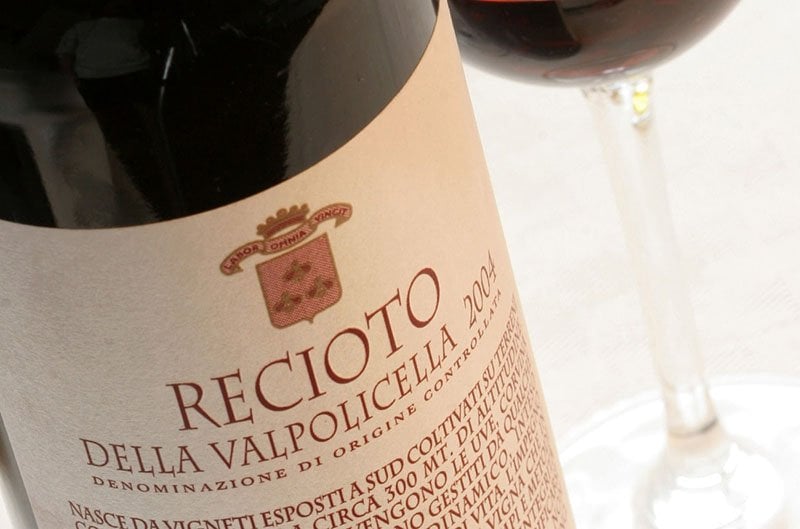
Recioto is a sweet red wine produced exclusively in Valpolicella, Verona. These wines are rich with very distinct cherry, berry, and black currant flavors.
Sugar level: Starting at around 50g residual sugar and upwards
Grape varieties: Local Valpolicella grape varieties like Corvina, Rondinella, and Molinara
Best Recioto bottles:
- 1989 Giacomo Montresor Recioto Amarone della Valpolicella ($53)
- 1985 Masi Amarone Recioto della Valpolicella Classico ($224)
2. Passito di Pantelleria
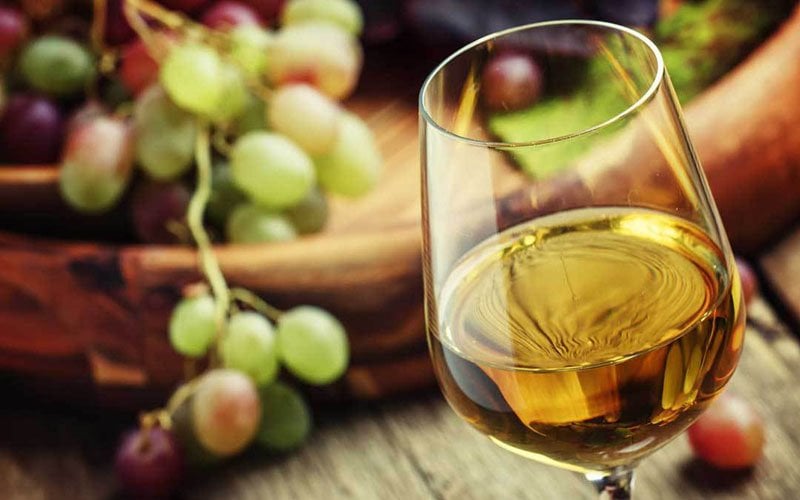
Passito di Pantelleria is produced on the Island of Pantelleria, located between Tunisia and Sicily.
This Italian sweet wine is characterized by volatile acidity and rich apricot and jam flavors.
Sugar level: 150–190g of residual sugar
Grape varieties: Made from 100% Zibibbo grapes (also known as Moscato d'Alessandria)
Best Passito di Pantelleria bottles:
- 2000 Marco De Bartoli Bukkuram 'Padre della Vigna' Passito di Pantelleria ($234)
- 2015 Cantine Pellegrino NES Passito di Pantelleria ($32)
3. Vin Santo

Vin Santo wine is primarily produced in the Chianti region of central Tuscany. However, this sweet wine is also produced in Veneto and Trentino Alto Adige (a region well-known for its Pinot Grigio and Pinot Bianco production.)
This is a full-bodied sweet wine with aromas of hazelnut, caramel, tropical fruit, and dried apricot.
Sugar level: Around 220g residual sugar
Grape varieties: Usually made from Malvasia, Trebbiano, and Sangiovese grapes. However, Garganega and Nosiola grapes are used in the regions of Veneto and Trentino Alto Adige.
Best Vin Santo bottles:
- 2001 Avignonesi Occhio di Pernice Vin Santo di Montepulciano ($601)
- 2004 Felsina Berardenga Vin Santo Chianti Classico ($119)
Sweet Italian Sparkling Wines
Sweet sparkling wines are produced by artificially halting the fermentation process. This process chills down the fermenting juice to retain some of its natural sweetness.
The wine then goes through a second fermentation, where it gets its bubbles.
Here are three types of Italian sweet sparkling wine:
1. Moscato d’Asti
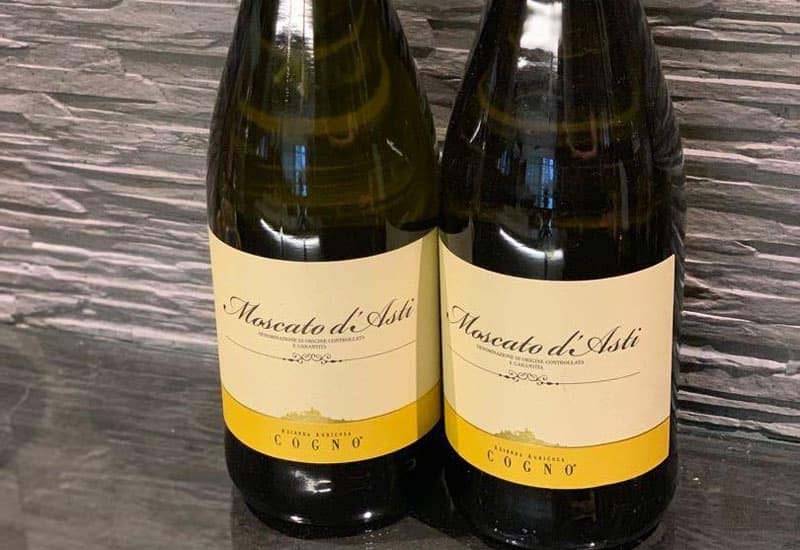
Moscato d’Asti is a sweet semi-sparkling white wine produced mainly in Asti and in smaller nearby regions in the provinces of Alessandria and Cuneo.
Once you open a bottle of this Moscato wine, you can expect the sweet aromas of peaches, fresh grapes, and orange blossoms. The palate is delicate and creamy.
Sugar level: Around 90–100g of residual sugar
Grape varieties: Made with Moscato Bianco (white Muscat) grapes
Best Moscato d’Asti bottles:
- 2011 Ca' d'Gal Vite Vecchia ($93)
- 2020 Rivata Moscato d'Asti DOCG ($14)
2. Asti Spumante

Asti Spumante is a sparkling Italian white wine produced throughout the Piedmont wine region.
This light-bodied sparkling wine has balanced sweetness and a delicate palate of oranges, pears, and apricots.
Sugar level: 30–50g residual sugar
Grape varieties: Made with Moscato Bianco (white Muscat) grapes
Best Asti Spumante bottles:
- Martini & Rossi Asti Spumante DOCG ($12)
- Caudrina Romano Dogliotti 'La Selvatica' ($16)
3. Brachetto d’Acqui

This sparkling wine is produced in the Piedmont wine region – in the provinces of Asti and Alessandria.
On the nose, this sweet red wine offers musky strawberry and raspberry aromas. The palate is sweet, soft, and delicate.
Sugar level: Around 90–115g residual sugar
Grape varieties: Made with 100% Brachetto grapes
Best Brachetto d’Acqui bottles:
- 2020 Giacomo Bologna Braida Brachetto d'Acqui DOCG ($16)
- 2017 Banfi Vigne Regali 'Rosa Regale' Spumante ($20)
4. Lambrusco

Lambrusco is a slightly sparkling red wine produced in Emilia-Romagna, northern Italy.
On the nose, this light, bubbly red wine offers a lovely floral aroma. The palate is sweet and fruity with low tannins.
Sugar level: Up to 15g of residual sugar
Grape varieties: Made with Maestri, Marani, Montericco, and Salamino grapes
Best Lambrusco bottles:
- Lunato Lambrusco Rosso Dolce dell'Emilia IGT ($9)
- 2014 Cantina della Volta Rose Brut Lambrusco di Sorbara ($39)
Sweet Italian Wine Food Pairings And Serving
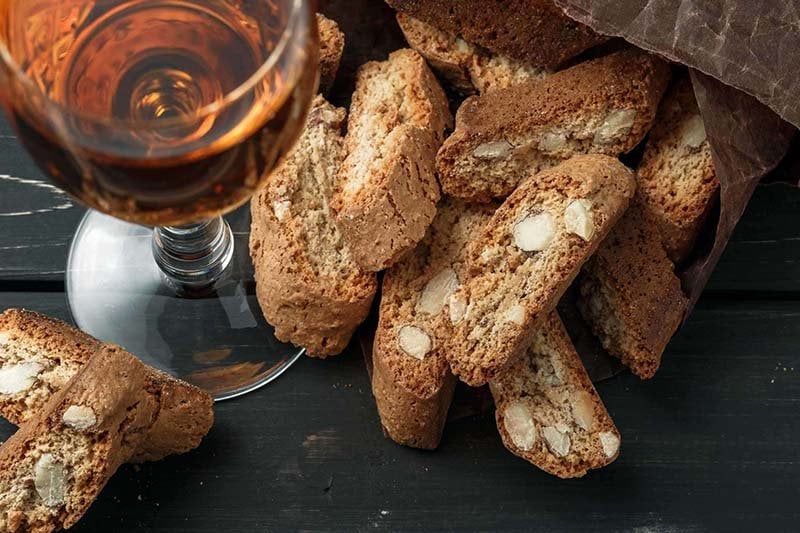
Sweet Italian wines pair exquisitely with a variety of foods:
- Fortified wines: Dark chocolate cake, almonds, fresh peaches, and a variety of cheese snacks
- Passito wines:Italian desserts, Tiramisu, and semi-aged cheese
- Sparkling sweet wines: Cured Piedmontese meats, hard cheeses, and light fruit desserts
Italian sweet wine should be served at a temperature between 10 and 18°C (50–64°F) in small, narrow-shaped dessert wine glasses. This way, you can sip on your sweet wine slowly and appreciate its rich flavors.
Satisfy Your Sweet Tooth With A Delicious Italian Dessert Wine

Sweet Italian wines come in a variety of different flavors and styles. You can choose from sparkling, naturally sweet, and fortified wines.
If you want more variety, Italy offers you several other exquisite white wine, red wine, and even rose wine options.
Now, the easiest way to get your hands on a delicious bottle of sweet Italian wine, dry wine, or any other fine wine, is through a reliable online wine investment platform like Vinovest.With the help of Vinovest's wine experts, you can buy, sell, and store your precious wines with ease.



